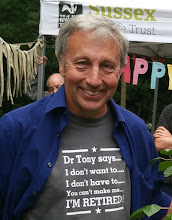Some of the concerns about the Forestry Commission sell-off can be illustrated by taking an example and looking at how things might play out.
Tilgate Forest is a conifer plantation just outside Crawley designated a “small commercial” forest in the consultation document. At present we in the Sussex Wildlife Trust work with the FC (through the Gatwick Greenspace Project – see the link in my previous blog) to open up the canopy in target areas, holding back the dark conifers, letting light in and encouraging the development of heather-covered heathland. This is good for wildlife (we are noticing increases in common lizards and adders for example) and is also improving access and peoples enjoyment. And all this can be done alongside timber production. FC’s forest plan for the area will continue this enhancement, linking up heathland blocks and maybe encouraging less common species (such as the bird the Nightjar) to colonise again. As it is so close to Crawley, there are immense opportunities not just for improving nature but also to encourage quiet enjoyment by people. It sits adjacent to an urban area where open space is much appreciated. We are developing an exciting vision for a Living Landscape in the area where enhancement takes place on a landscape scale for people and wildlife.
That’s how it is at the moment. What of the future under the new arrangement?
As it is a small commercial plantation the proposal would result in a long term lease on the site being sold to the private sector. Charities and community groups may put in an offer but it is unlikely that they could raise enough funds. A private landowner would wish to see a return on their investment so the emphasis would be on commercial forestry. It may be possible to protect what is there to some extent, through restrictions placed on the lease arrangement, but it is most unlikely that any further enhancement would take place. Indeed the new owner only has to “neglect” management of the recently restored heathland for it all to be lost. Whilst access could be legally protected, this too needs investment in order for access to be maintained in practice.
The best that is likely is that the existing value might be preserved, but not improved. In practice even this is unlikely.
And the money gained by the Treasury? There would be some income from the sale, and FC would not be spending money on management, but the new owner would be eligible for a range of grants. Any net gain to the Treasury would be small or even negative. There is no financial benefit to the public in doing this.
So - there would be no financial gain to the government coffers, wildlife and access might not even be maintained, let alone improved, a fruitful partnership between FC and the Sussex Wildlife Trust would have been brought to an end and any vision of landscape scale enhancement for people and wildlife will be forgotten. Not only this but we will probably spend hours in meetings trying (and probably failing) to get the best for wildlife in any future arrangement. So what are the benefits? Why are we even talking about this?
Subscribe to:
Post Comments (Atom)

No comments:
Post a Comment